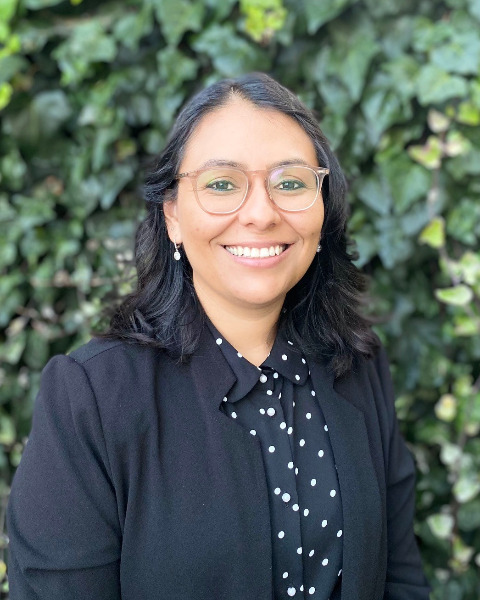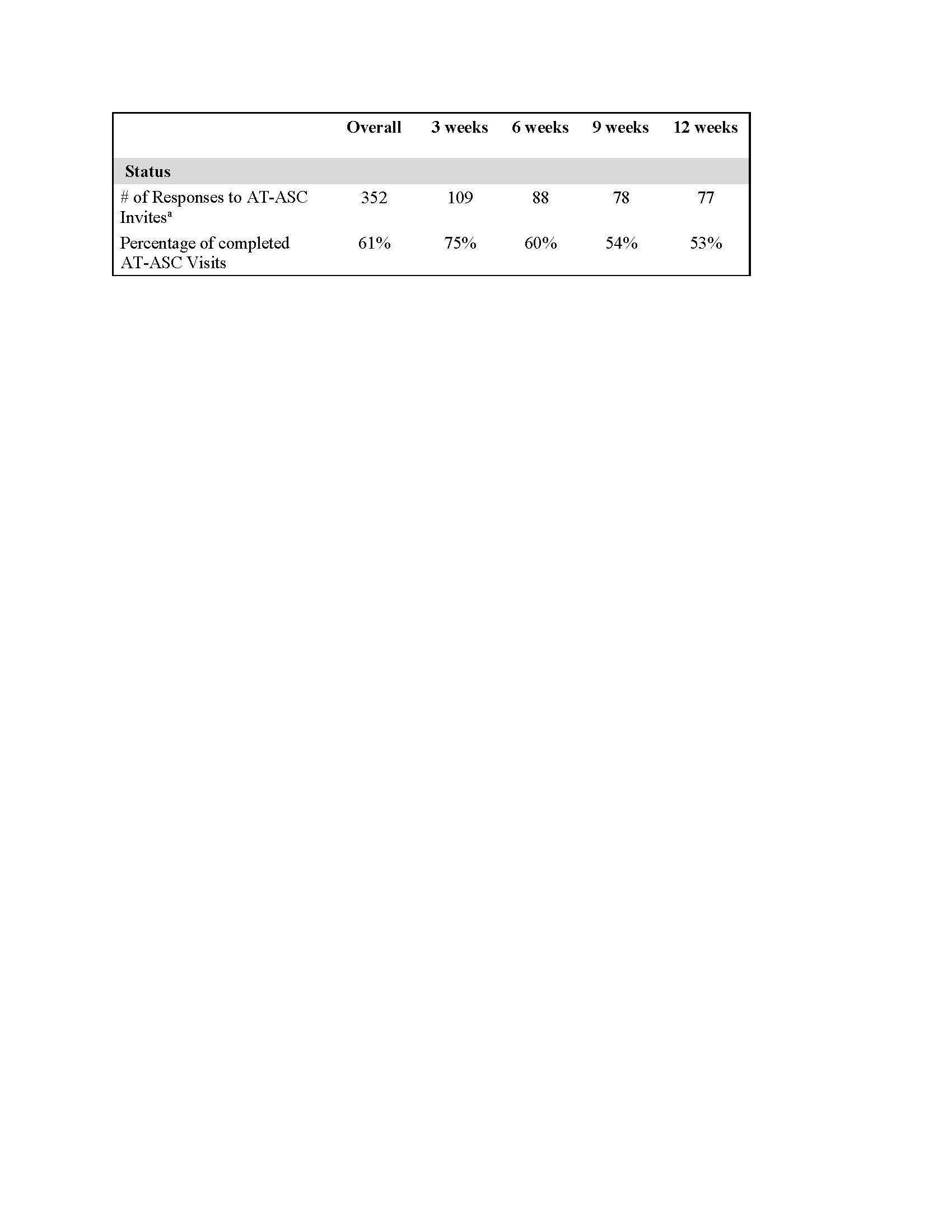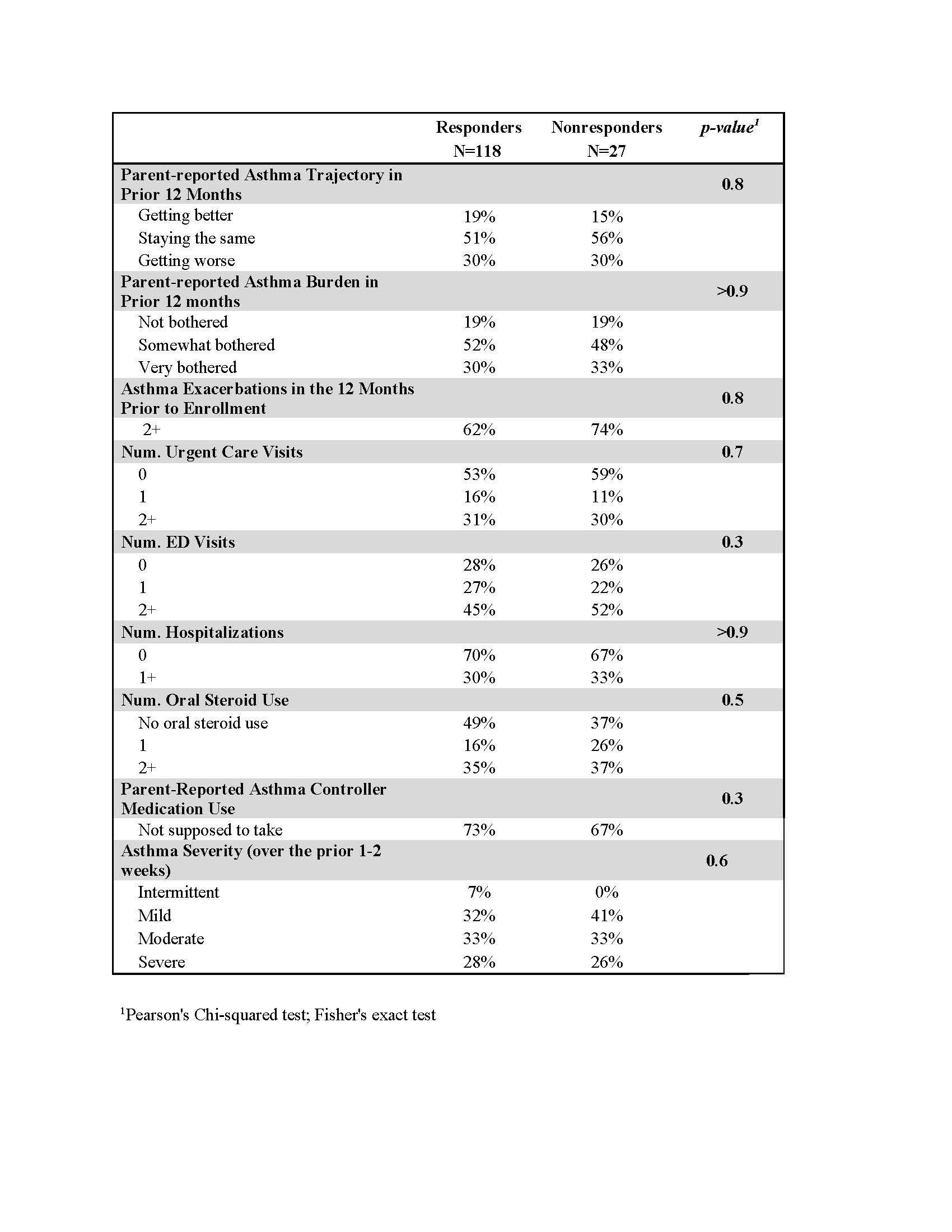Asthma 2
Session: Asthma 2
487 - Viability of short-term caregiver engagement with asynchronous telemedicine asthma specialist care (AT-ASC) after an emergency department (ED) asthma visit for children
Sunday, April 27, 2025
8:30am - 10:45am HST
Publication Number: 487.7104
Roxana Delgado-Martinez, University of California, Los Angeles David Geffen School of Medicine, Los Angeles, CA, United States; Samantha Lozano, Children's Hospital Los Angeles, San Gabriel, CA, United States; Andy Nguyen, University of California, Los Angeles David Geffen School of Medicine, Elk Grove, CA, United States; Ray Cheung, Breathium, Pasadena, CA, United States; Estefania Ramires-Sanchez, University of California, Los Angeles David Geffen School of Medicine, Sacramento, CA, United States; Alexandra M.. Klomhaus, University of California, Los Angeles David Geffen School of Medicine, Los Angeles, CA, United States; Jeanine E. Hall, Children's Hospital Los Angeles, Los Angeles, CA, United States; Bahareh Ravandi, Children's Hospital Los Angeles, Los Angeles, CA, United States; Todd Chang, Children's Hospital Los Angeles, Los Angeles, CA, United States; Kathryn Pade, Rady Children's Hospital San Diego, San Diego, CA, United States; Sande Okelo, UCLA Mattel Childrens Hospital, CULVER CITY, CA, United States

Roxana Delgado-Martinez, BA (she/her/hers)
Research Coordinator
University of California, Los Angeles David Geffen School of Medicine
Los Angeles, California, United States
Presenting Author(s)
Background: Desire for specialist care is high among caregivers of children being seen in the ED for asthma. However, physician shortages, under- and delayed referrals and other patient barriers (transportation, wait times) limit specialist access. Telemedicine may improve specialist care access, but its viability to successfully engage parents after an ED visit for asthma specialist care is unknown.
Objective: We measured parental engagement with an SMS text message-based asynchronous telemedicine asthma specialist care (AT-ASC) post-ED visit and assessed the association with baseline study participant sociodemographic and clinical factors.
Design/Methods: This secondary analysis examines data collected from a randomized clinical trial of AT-ASC including children (ages 2-18) seeking asthma care at a large urban pediatric ED (June 2022 - August 2024). Caregivers of pediatric patients were recruited to participate in 1) an asthma morbidity assessment during the ED visit and 2) an asthma morbidity survey via SMS text (i.e., an AT-ASC visit) every 3 weeks after the index ED visit. Intervention participants also received: 3) initiation of controller medications by a pediatric pulmonologist within 24 hours of enrollment with adjustments based on AT-ASC visit findings; 4) automated treatment plans based on parent-reported controller medication adherence and asthma severity; and 5) an asthma pollution alert instructing parents take protective measures during high pollution days. We evaluated parental engagement in AT-ASC visit invites over the first 12 weeks post-ED visit, analyzing baseline sociodemographic and clinical factors using Fischer’s exact and Chi-square tests, as appropriate. Statistical significance was set at p<.05.
Results: A total of 145 participants were randomized (control = 68; intervention = 77), including 10 % Black and 77 % Hispanic, with 92 % on public health insurance, and significant baseline asthma morbidity (Table 1). Average engagement with AT-ASC visits was 61% over the first 12 weeks post-ED enrollment, peaking at week 3 (75%) and lowest at weeks 9 and 12 (54% and 53%, respectively) (Table 2). Bivariable analyses showed no significant associations between post-ED engagement and baseline parent-reported sociodemographic and clinical characteristics (Table 3).
Conclusion(s): High levels of short-term post-ED engagement were observed among parents enrolled in AT-ASC during an ED encounter. This represents a significant improvement over previously reported post-ED engagement with follow-up care. The effects of AT-ASC on asthma outcomes needs further investigation.
Table 1. Baseline sociodemographic and clinical characteristics, N=145
.jpg)
Table 2. Parental Engagement with AT-ASC following ED Visit for Asthma, N=145
 Note. One (1) invitation to an AT-ASC visit was distributed by SMS text message every 3 weeks
Note. One (1) invitation to an AT-ASC visit was distributed by SMS text message every 3 weeksa Participant opened the AT-ASC survey and completed part or all of the survey
Table 3. Association of baseline clinical characteristics and AT-ASC Visit engagement, N=145


